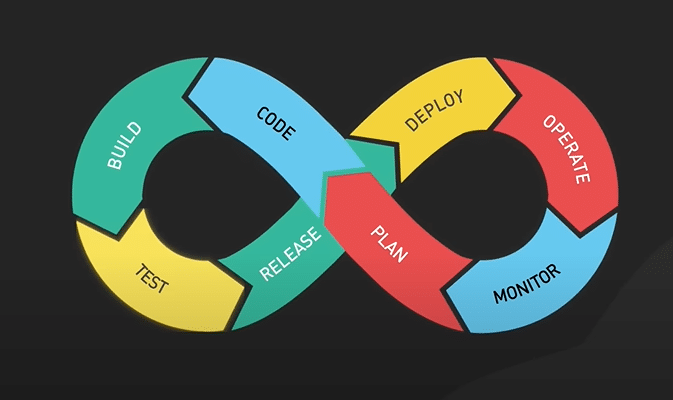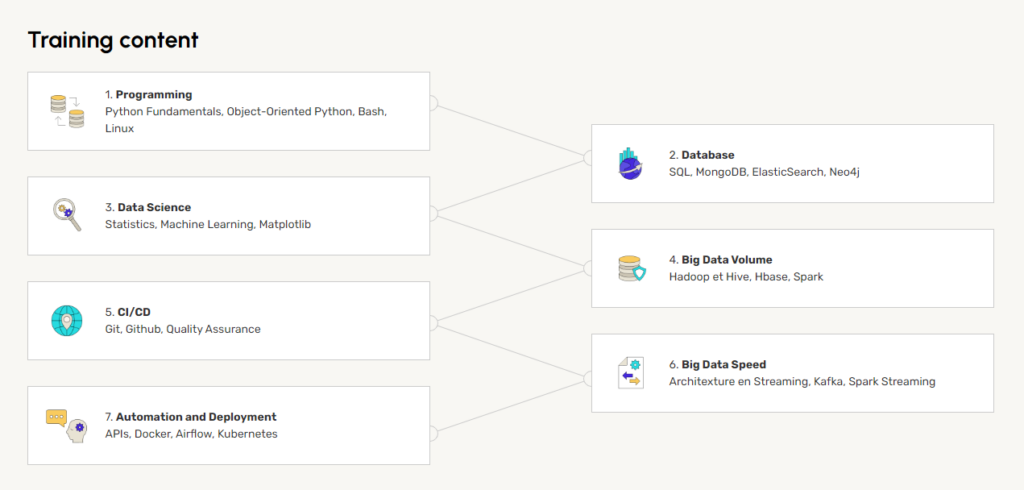Continuous Integration (CI) and Continuous Delivery (CD) are a set of principles and practices that enable development teams to make changes to software code more reliably and more frequently. The implementation of CI/CD is at the heart of agile and DevOps development methodologies. It enables software development teams to focus on business needs, code quality, and cybersecurity. Deployment steps are automated.
What is CI / CD ?
Continuous Integration is a philosophy and a set of practices whereby development teams implement changes progressively, and frequently check the code before adding to it.
Modern applications rely on different tools and code platforms. Consequently, teams need a mechanism for integrating and validating changes.
Continuous Integration aims to provide an automated way of building and testing applications. The consistency of the integration process enables teams to make changes to the code more frequently. This improves collaboration, as well as the final quality of the software.
Continuous Delivery or CD is the next step. It automates the delivery of applications to selected infrastructure environments. Here again, the aim is to harmonize code delivery between the various production, development, and testing environments on which most development teams work simultaneously.
CI/CD tools are used to store parameters specific to each environment, and automation then enables the necessary calls to be made to web servers, databases, and other services requiring procedures such as restarting during application deployment.
Continuous Integration and Continuous Delivery require Continuous Testing. This procedure ensures that code and application quality are maintained.
How does CI work?
The Continuous Integration philosophy is based on mechanisms and automation. Developers frequently deposit their code in a version control folder, to simplify the detection of defects and other quality issues in small chunks of code. This approach also reduces the risk of several developers editing the same code simultaneously.
Various techniques are used by CI development teams to control code and functionality. These include Feature Flags and Version Control Branching. After this validation stage, the code is sent to production.
The build process is automated by packaging all software, databases, and other components. Test execution is also automated, to provide feedback to developers on changes made to the code.
Many CI/CD tools allow developers to create builds on demand, by dropping code into the version control folder or on a defined date. The integration strategy needs to be discussed by the team, particularly about the frequency of builds and code deposits.

How does CD work?
Continuous Delivery automates the “push” of applications to delivery environments. Tools such as Jenkins, CircleCI, AWS CodeBuild, Azure DevOps, or Atlassian Bamboo automate the testing and evaluation of application changes.
Typically, the Continuous Delivery pipeline is broken down into build, test, and deployment stages. Additional steps can be added, such as extracting code from the version control folder, transferring code, pushing application components to the appropriate services, or continuous testing.
In Cloud environments, CI/CD pipelines also make use of software containers like Docker and orchestration systems like Kubernetes. Serverless architectures are also widely used and involve letting the Cloud service provider manage the infrastructure. The application consumes resources according to its needs.
What are the advantages of CI / CD?
Continuous integration and delivery mean greater collaboration and productivity. Code quality is improved thanks to better control, and the quality of the final software is also enhanced.
In addition, CI/CD pipelines enable companies to frequently enhance their applications while relying on a reliable delivery process. Standardized builds, testing, and automated deployment let teams focus on improving applications rather than on technical details.
This practice is ideal for the DevOps method, as it avoids misalignment between developers wishing to push code too frequently and ops teams seeking application stability. Automation enables code changes to be pushed more frequently, while standardized configurations and continuous testing improve stability.
CI / CD and Data Science
As in software development, CI/CD is used in Data Science to transfer data to production. This approach enables automatic deployment.
Data Science processes are built by different experts working together, such as Data Engineers, Machine Learning experts, and visualization specialists. They involve applying Machine Learning algorithms to data.
In this field, integration generally involves assembling the underlying parts. This ensures that the libraries of a specific toolkit or the correct versions of a module are included in the final data science process.
During development, functions are generated and the model is trained. During integration, the optimized function generation process is combined with the trained model. Integration also includes the production process.
Continuous deployment in Data Science is similar to that in software development and consists of automatically replacing an existing application or API. This includes the ability to restore a previous version in the event of a problem during production.
During the Data Science production process, model performance must be continuously monitored. Change detection is crucial, and must be ensured by mechanisms. Models can then be automatically re-trained and redeployed, while the Data Science team can be alerted to create a new process.
Git and GitHub
Version control is at the heart of the CI / CD approach. It consists of saving any changes made to a software development or Data Science project so that you can go back in time in the event of an error or problem. It is always possible to restore a previous version.
Developed in 2005, Git is an extremely popular version control system. Installed and maintained on a local system, it enables versions to be saved without the need for Internet access.
The system stands out for its responsiveness, ease of use, and free price. It works particularly well with text files such as computer code. Its real strength, however, lies in its branching model, enabling independent local branches to be created within the code. This makes it possible to test new ideas without necessarily putting them into production.
The GitHub code hosting and repository service enables Git version control projects to be shared online, beyond the local computer or server. The service is entirely cloud-based.
GitHub’s graphical user interface is extremely intuitive and offers native task management and control tools for programmers. A marketplace enables additional functionalities to be implemented.
The GitHub service lets you share code and collaborate with other users on the same software or data science project. Each change introduced creates a new branch, so each team member can work simultaneously without interfering with the progress of others.

How can I learn about CI / CD?
Continuous integration and continuous delivery are now widely used in business, for software development or Data Science. It’s a highly sought-after business skill. To master CI / CD, you can choose DataScientest.
Our Data Engineer course includes a CI / CD module covering Git, GitHub, and quality assurance. Other modules cover Python programming, databases, data science, Big Data, automation, and deployment.
Upon completion of the program, you will have all the skills required to become a Data Engineer. You’ll be able to store, transform and transmit large volumes of data, deploy Machine Learning models for production use, and create streaming data processing pipelines.
This distance learning course can be completed in a 9-month Continuing Education program, or an intensive 11-week BootCamp mode. Our Blended Learning approach combines individual coaching on our online platform and Masterclass.
Finishing this training leads to a certificate issued by the University Paris La Sorbonne as part of our partnership. 80% of our alumni have found immediate employment.
This training is accessible with a Bac+3 in mathematics or Bac+5 in science, as well as an understanding of SQL language and Linux systems. As far as financing is concerned, all our training courses are eligible for the CPF. Don’t wait any longer and discover our Data Engineer training!










